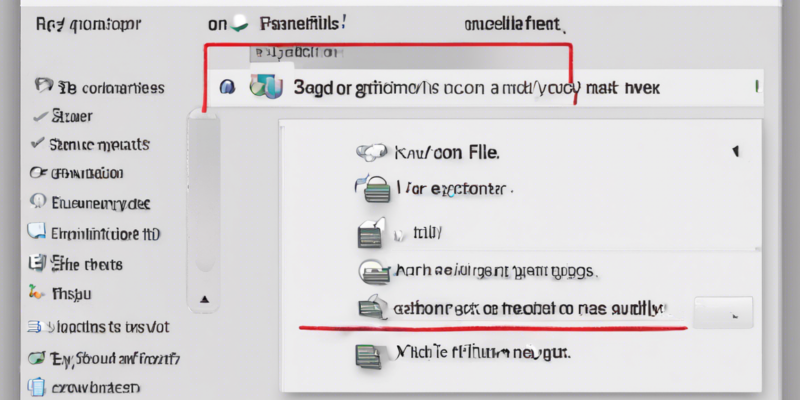Have you ever encountered the frustration of trying to share a particular type of file during a conversation, only to realize that it’s not allowed due to security or compatibility issues? The digital landscape is filled with various file formats, some of which are non-sharable on standard messaging platforms or email services. Understanding which file types fall under this category can save you time and effort when trying to communicate effectively with others. In this article, we will explore the most common non-sharable file types during conversations, the reasons behind their restrictions, and alternative methods to share them securely. Let’s dive in.
Understanding Non-Sharable File Types
1. Executable Files (.exe)
One of the most common file types that are not permitted for sharing during conversations are executable files. These files, denoted by the .exe extension, are programs that can execute specific functions on a computer. They are often restricted due to security concerns, as they can contain malicious code that can harm the recipient’s device.
2. Compressed Files with Unknown Extensions
Compressed files, such as those in the .zip or .rar formats, are generally allowed for sharing. However, if a compressed file contains unknown extensions or has been encrypted, it may not be shareable. This restriction is in place to prevent the spread of malware or viruses through disguised files.
3. System Files
Files that are crucial to the operating system of a computer, known as system files, are usually restricted from sharing. These files are necessary for the proper functioning of the device, and their manipulation can lead to system instability or crashes.
4. Temporary Files
Temporary files, often denoted by the .tmp extension, are created by various applications to store temporary data. These files are typically non-sharable as they serve a specific purpose for a limited time and may contain sensitive information that should not be distributed.
5. Database Files
Files related to databases, such as .db or .sql files, are commonly restricted from sharing due to the sensitive nature of the data they contain. Sharing database files can lead to unauthorized access to critical information, making them non-sharable during conversations.
Reasons Behind File Sharing Restrictions
1. Security Concerns
The primary reason for restricting certain file types from being shared during conversations is security. Malicious actors often exploit file sharing to distribute malware, viruses, or other harmful content. By limiting the types of files that can be shared, platforms and services aim to protect users from potential security threats.
2. Compatibility Issues
Another reason for prohibiting the sharing of specific file types is compatibility. Some file formats may not be universally supported across different devices or operating systems, leading to errors or issues when trying to open or access them. To ensure a seamless user experience, platforms may restrict the sharing of incompatible file types.
3. Privacy and Data Protection
Files containing sensitive or personal information, such as financial documents, legal contracts, or proprietary data, are often restricted from sharing to protect privacy and data integrity. Unauthorized access to such files can have severe consequences, including identity theft, financial loss, or legal implications.
Alternatives for Sharing Non-Sharable Files Securely
While certain file types may be restricted from direct sharing during conversations, there are alternative methods to share non-sharable files securely. Here are some effective approaches:
1. Cloud Storage Services
Utilizing cloud storage services such as Google Drive, Dropbox, or OneDrive allows you to upload non-sharable files and share them via secure links. Recipients can access the files without directly transferring them through messaging platforms, ensuring both security and compatibility.
2. File Encryption
For sensitive files that cannot be shared directly, consider encrypting them before transmission. Encryption adds an extra layer of security to your files, making them unreadable to unauthorized users. Various encryption tools are available for secure file sharing.
3. Secure File Transfer Services
There are specialized secure file transfer services designed for sharing sensitive or large files securely. Platforms like WeTransfer, SecureDrop, or SendSafely offer encrypted file transfer options that prioritize data protection and confidentiality.
4. Password Protection
If you must share a non-sharable file directly, consider password protecting it before sending. By assigning a unique password to the file, you can control access and ensure that only authorized recipients can open and view its contents.
5. File Conversion
In some cases, converting a non-sharable file into a more commonly accepted format can enable sharing. Tools and software for file conversion are available online, allowing you to transform files into formats that are compatible with most messaging platforms and email services.
Frequently Asked Questions (FAQs)
1. Can I share non-sharable files via email attachments?
Email services often have restrictions on the types of files that can be attached and sent via email. If a file is non-sharable, it may be blocked by the email service’s security measures. Consider using alternative methods for sharing such files securely.
2. Why are executable files (.exe) prohibited from sharing?
Executable files (.exe) can execute code on a computer, making them potential carriers of malware or viruses. To prevent security risks, many platforms and services do not allow the sharing of executable files during conversations.
3. How can I determine if a file is non-sharable?
If you encounter difficulties sharing a file through messaging platforms or email services, it may be due to the file’s format or content. Check the file extension and consider its sensitivity or potential security implications to determine if it is non-sharable.
4. Are there any exceptions to sharing non-sharable files?
In some cases, with proper authorization or clearance, exceptions may be made for sharing otherwise non-sharable files. Organizations or individuals may have secure channels or protocols for transmitting sensitive data that would typically be restricted.
5. What precautions should I take when sharing non-sharable files?
When sharing non-sharable files, prioritize data security and privacy. Use secure methods such as encryption, password protection, and secure file transfer services to safeguard sensitive information and prevent unauthorized access.
In conclusion, navigating the restrictions on non-sharable file types during conversations requires an understanding of security, compatibility, and data protection considerations. By exploring alternative sharing methods and prioritizing secure transmission practices, you can effectively communicate and exchange files while safeguarding your data and devices. Stay informed, stay secure, and explore innovative solutions for sharing files responsibly in today’s digital environment.



Comments